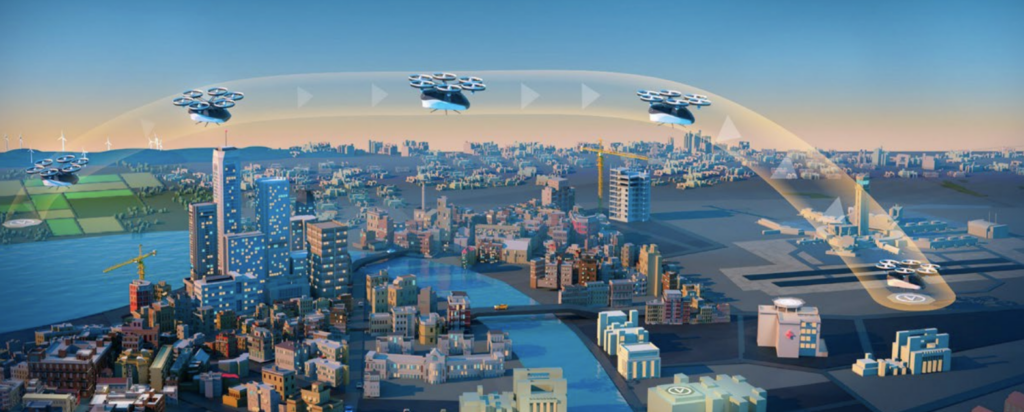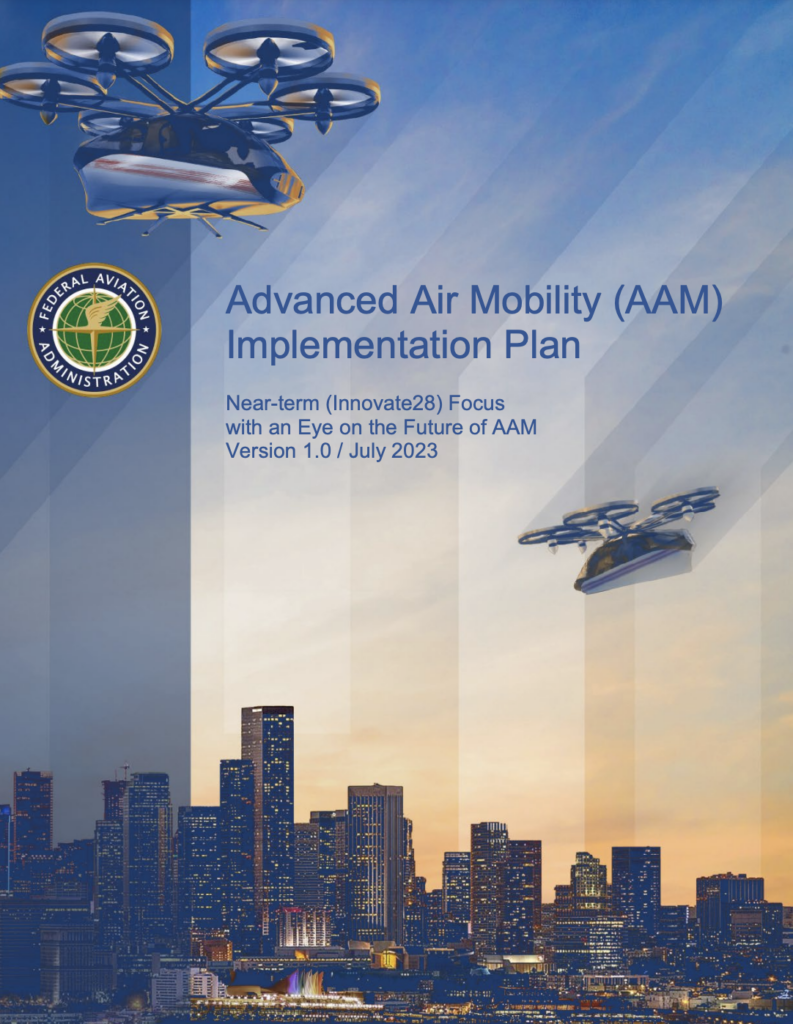FAA Outlines Advanced Air Mobility Implementation Plan


The FAA releases a plan for the implementation of advanced air mobility, including piloted eVTOL aircraft. (Photos: FAA)
The Federal Aviation Administration recently outlined its new plan to implement advanced air mobility (AAM) into existing air traffic infrastructure in the United States. This category of aviation is defined as transportation methods that use new technology to transport people and cargo between two locations and includes concepts like electric aircraft and electric vertical take-off and landing (eVTOL) aircraft. However, this category refers only to aircraft in which a pilot is onboard and involved in operating the flight.
As this new technology continues to develop, the FAA is implementing a crawl-walk-run approach to implementing AAM technology into the national airspace system. It first aims to integrate this new technology with minimal change by utilizing existing infrastructure to accommodate AAM. The agency also initiated a program named Innovate28 (I28), which involves collaboration between private firms in the industry and the government to create an ecosystem designed to allow these new, efficient methods to thrive.

The FAA’s overall implementation plan is tentative and will shift based on feedback from various stakeholders of the new technology. Periodic updates will occur to ensure the plan protects the safety of both the operators and the flying public. Despite the document’s flexibility, the FAA has outlined how it plans to integrate AAM into existing infrastructure through its I28 program. The I28 will outline what the operating environment will be in 2028 based on projections made from the technology’s current pace of development. It will also set several goals for the FAA and stakeholders to meet, along with key milestones that must be achieved to maintain a successful program.

In terms of airspace usage, AAM operators are expected to comply with many of the requirements that existing air traffic follow, including regulations around communication, navigation, and surveillance (CNS). Aircraft in this class are expected to fly at 4,000 feet above urban and metropolitan areas and major airports. This means AAM will operate primarily in Class B and Class C airspace.
I28 AAM routes will be designed to be used for VFR conditions exclusively. When possible, it will use existing or modified low-altitude VFR routes. Though these routing constructs don’t always supply the needed separation of AAM traffic, they do help pilots in avoiding major traffic flows dominated by larger aircraft. These routes might include both VFR flyways, VFR corridors, VFR transition routes, and special flight rule areas.
In addition to routing, AAM will be provided air traffic control (ATC) services when necessary. AAM operators are expected to comply with the appropriate CFR and to conduct operations with flight schedules that are predetermined. This way they can be coordinated with local ATC and other stakeholders.
Despite some planned integration with existing infrastructure, new accommodations will also be needed for the new technology. Things like adequate parking zones for activities like loading and unloading will be important for successful integration. These must be separate from the pad used for take-off and landing for safe parking. Other added infrastructure the plan highlights includes charging stations, weather stations, and fire management services.
On aircraft certification, the document states, “New AAM aircraft are expected to offer capabilities ranging from single-pilot, recreational eVTOL aircraft, to piloted, powered lift, multi passenger short range aircraft. The type certification of AAM aircraft is possible because the FAA can leverage the current regulatory framework, which allows development of project-specific requirements tailored to fit the unique aspects of novel designs. The flexibility to tailor requirements can come in the form of special conditions or unique airworthiness criteria under a special class, depending on the AAM design (airplane, rotorcraft, or powered lift).”
As AAM technologies continue to develop, proactive planning to accommodate these new modes of air traffic is key for allowing safe integration into U.S. airspace. This tentative plan ensures the safety of passengers, operators, and other stakeholders.
—————
Boost Internet Speed–
Free Business Hosting–
Free Email Account–
Dropcatch–
Free Secure Email–
Secure Email–
Cheap VOIP Calls–
Free Hosting–
Boost Inflight Wifi–
Premium Domains–
Free Domains





